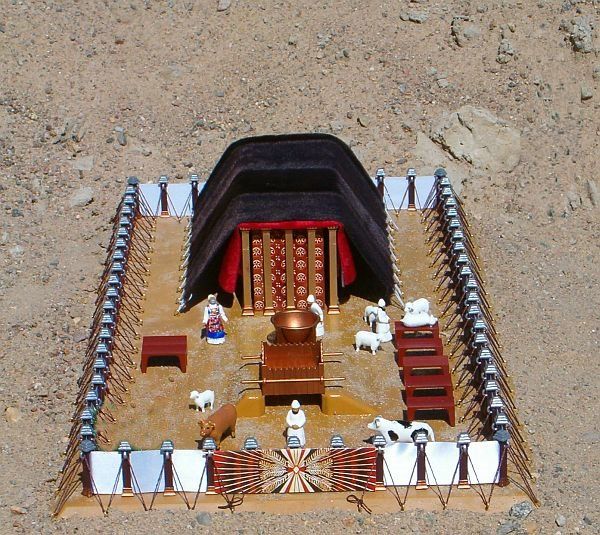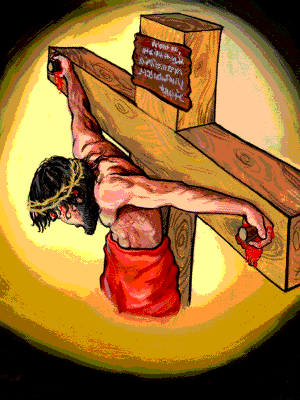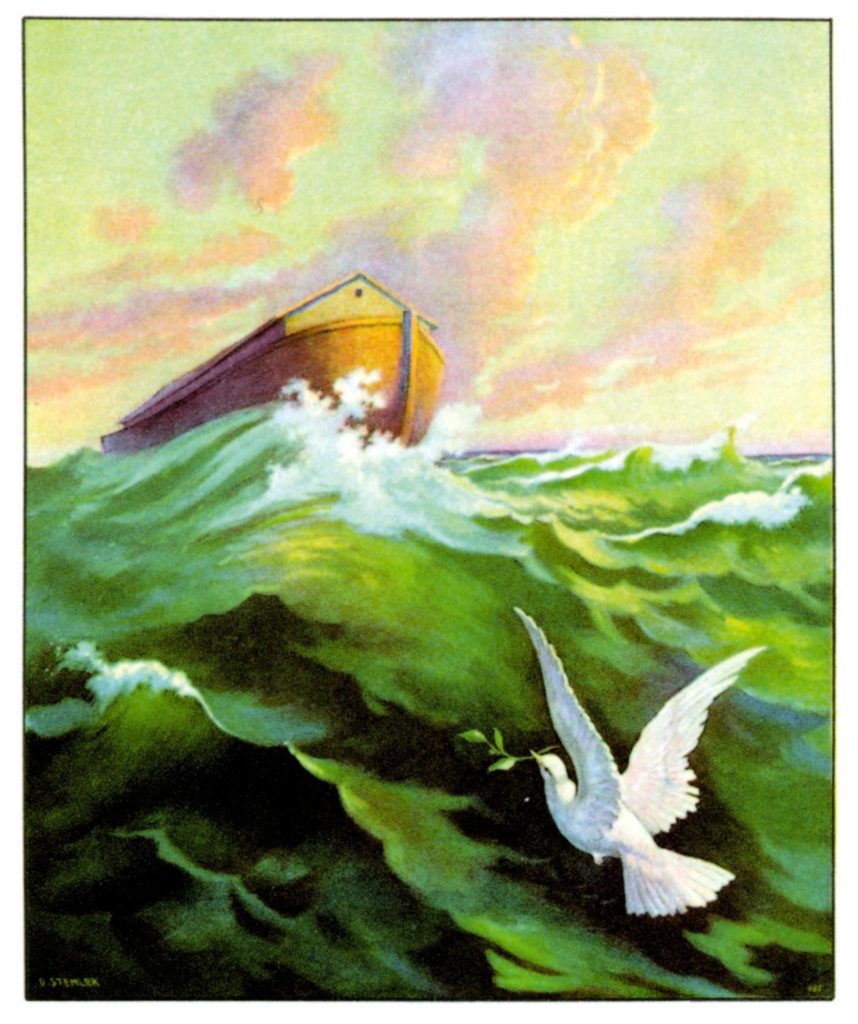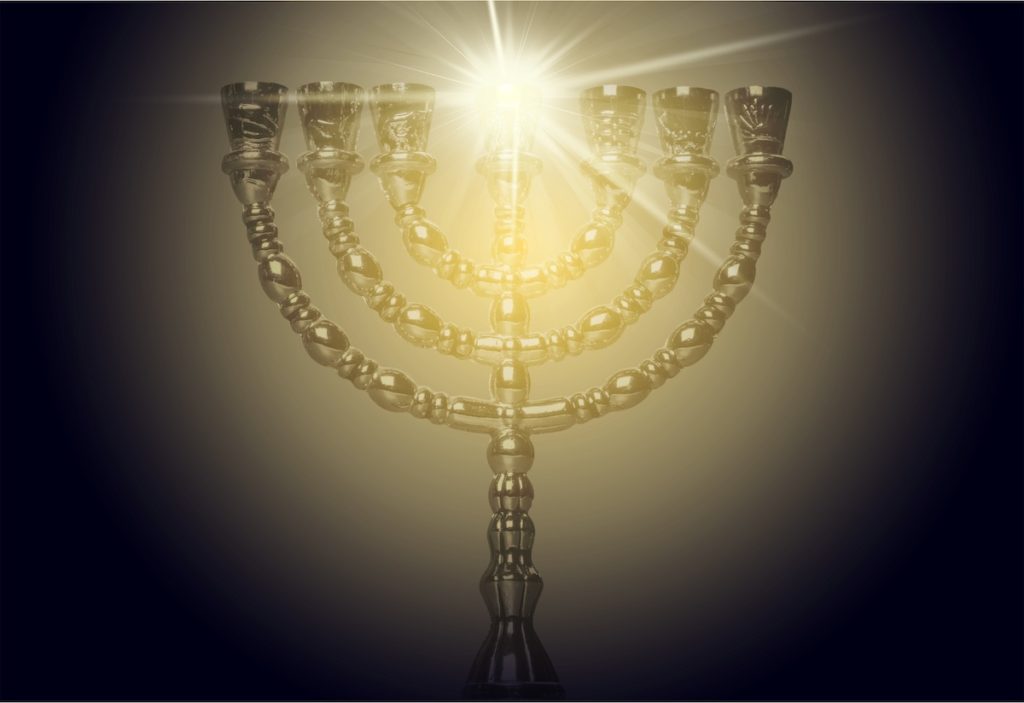
The Tabernacle of Moses is a fascinating study at many levels, for it is like the facets of a beautiful diamond that reflect light from many angles. With respect to the Tabernacle of Moses, it reflects the glorious light of YHVH Elohim’s Truth in a splendid and multi-dimensional form. What we present here on the tabernacle is merely a thimble full out of an ocean of knowledge pertaining thereto.
In this study on the Tabernacle of Moses, we will look at the seven, pre-qualifying ritualistic steps that Elohim required of a Levitical priest in order to minister in the tabernacle. We will then compare that with the seven steps that the Bible in the Testimony of Yeshua (or New Testament) requires a person to take in order to become a disciple of Yeshua and a child of Elohim. Scripture refers to such a person as a member of “the royal priesthood” (1 Pet 2:9), or a kingdom of priests under King Yeshua (Rev 1:6; 5:10; 20:6), which harkens back to the Levitical priesthood of old during the time of the tabernacle. Amazingly, the steps to consecrating a priest in the Tabernacle of Moses were written some 1,500 years before the New Testament was penned, and, therefore, are amazingly prophetic down to the last detail of what was subsequently required of the saint as we shall now see.
The number seven is a biblically symbolic number signifying completion or perfection, and the Bible contains numerous examples of this. The seven steps required to consecrate a person for service before YHVH Elohim in the Tabernacle of Moses is merely one such example. We find these seven outlined in Exodus chapters 28 and 29 along with Leviticus chapter eight. Let us now take a quick look at each of these steps and compare them with the steps that the Testimony of Yeshua now requires a person to take to receive salvation and inclusion in the everlasting kingdom of Elohim.
Step One
Aaron an his sons were taken from among the children of Israel ( Exod 28:1). This was a divine calling. Aaron and his sons did not choose to be Elohim’s priests. Rather, he selected them out of the tribes of Israel and they merely responded to his call. This prefigures divine election or selection (see John 15:16). YHVH Elohim calls each person to follow him; it is then up to each individual to choose whether to respond to the call. No human chooses Elohim until he first chooses them. This is a major biblical truth that the Christian church often overlooks and fails to teach about, even though Yeshua and his stressed its importance.
For many are called, but few are chosen. (Matt 22:14)
To all who are in Rome, beloved of Elohim, called to be saints: grace to you and peace from Elohim our Father and the Lord Yeshua the Messiah. (Rom 1:7)
And we know that all things work together for good to those who love Elohim, to those who are the called according to His purpose. (Rom 8:28)
Moreover whom He predestined, these He also called; whom He called, these He also justified; and whom He justified, these He also glorified. (Rom 8:30)
Elohim is faithful, by whom you were called into the fellowship of His Son, Yeshua the Messiah our Lord. (1 Cor 1:9)
For you see your calling, brethren, that not many wise according to the flesh, not many mighty, not many noble, are called. (1 Cor 1:26)
But as Elohim has distributed to each one, as the Lord has called each one, so let him walk. And so I ordain in all the churches. (1 Cor 7:17)
There is one body and one Spirit, just as you were called in one hope of your calling. (Eph 4:4)
Therefore we also pray always for you that our Elohim would count you worthy of this calling, and fulfill all the good pleasure of His goodness and the work of faith with power… (2 Thess 1:11)
[T]o which He called you by our gospel, for the obtaining of the glory of our Lord Yeshua the Messiah. (2 Thess 2:14)
Fight the good fight of faith, lay hold on eternal life, to which you were also called and have confessed the good confession in the presence of many witnesses. (1 Tim 6:12)
[W]ho has saved us and called us with a holy calling, not according to our works, but according to His own purpose and grace which was given to us in the Messiah Yeshua before time began… (2 Tim 1:9)
And for this reason He is the Mediator of the new covenant, by means of death, for the redemption of the transgressions under the first covenant, that those who are called may receive the promise of the eternal inheritance. (Heb 9:15)
But you are a chosen generation, a royal priesthood, a holy nation, His own special people, that you may proclaim the praises of Him who called you out of darkness into His marvelous light. (1 Pet 2:9)
For to this you were called, because the Messiah also suffered for us, leaving us an example, that you should follow His steps. (1 Pet 2:21)
But may the Elohim of all grace, who called us to His eternal glory by the Messiah Yeshua, after you have suffered a while, perfect, establish, strengthen, and settle you. (1 Pet 5:10)
[A]s His divine power has given to us all things that pertain to life and godliness, through the knowledge of Him who called us by glory and virtue… (2 Pet 1:3)
Jude, a bondservant of Yeshua the Messiah, and brother of James, to those who are called, sanctified by Elohim the Father, and preserved in Yeshua the Messiah. (Jude 1:11)
As should be obvious from this long list of Scriptures (and many more could be given), Elohim selects out of the masses of humanity those who will be his disciples. The church’s teaching that humans in their sinful and unregenerate state choose “to accept Jesus” as if they were initiating the process is totally erroneous. Again, humans do not choose him; rather, it is simply up to each of us to respond to his call, and then to continue in it.
It is a mystery of heaven why YHVH chooses some people and not others. But may those saints who have been called consider their calling a divine honor and privilege, be humbly thankful for it, and take their calling seriously for the amazing and undeserved gift that it is. For as Peter instructs the saints, “Therefore, brethren, be even more diligent to make your call and election sure, for if you do these things you will never stumble,” (1 Pet 1:10)
Step Two
Aaron and his sons were brought into the door of the tabernacle (Exod 29:4). As is apparent to those who have studied the Tabernacle of Moses, all of its aspects points to the Person and work of Yeshua the Messiah, who would come to the earth some 1,500 years later. Moreover, the tabernacle contains within it the seven steps that a person must take in order to come out of this world and his or her sinful state of separation from the Creator, and to come into a personal relationship with their Father in heaven through Yeshua the Messiah. As such, the door of the tabernacle is the only portal through which the priests of old had to enter to begin their spiritual service to Elohim. Similarly, that door prophetically symbolized the saint coming into a relationship with their Father in heaven through Yeshua the Messiah, who is the way to the Father and the door out of a world of sin and out of each person’s own sinful condition.
Continue reading








